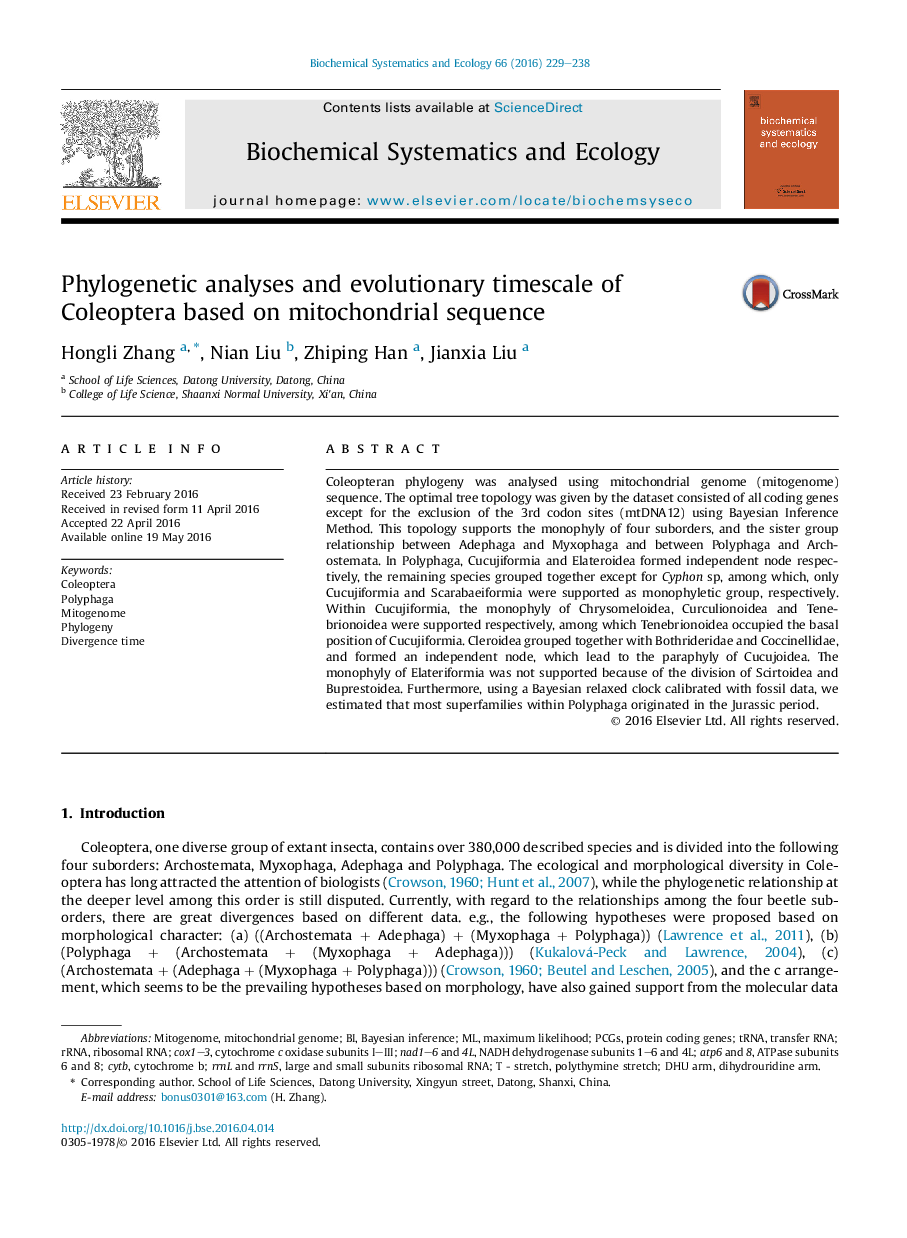| Article ID | Journal | Published Year | Pages | File Type |
|---|---|---|---|---|
| 1353761 | Biochemical Systematics and Ecology | 2016 | 10 Pages |
•Four repetitive sequences and two long T-stretches were found in A + T rich region of mitogenome from Tenebrio molitor.•Most deeper level phylogenetic relationship in Polyphaga were resolved using the dataset mtDNA12.•The dataset mtDNA12 is one relatively ideal marker for analysing the phylogeny and timescale of Coleoptera.
Coleopteran phylogeny was analysed using mitochondrial genome (mitogenome) sequence. The optimal tree topology was given by the dataset consisted of all coding genes except for the exclusion of the 3rd codon sites (mtDNA12) using Bayesian Inference Method. This topology supports the monophyly of four suborders, and the sister group relationship between Adephaga and Myxophaga and between Polyphaga and Archostemata. In Polyphaga, Cucujiformia and Elateroidea formed independent node respectively, the remaining species grouped together except for Cyphon sp, among which, only Cucujiformia and Scarabaeiformia were supported as monophyletic group, respectively. Within Cucujiformia, the monophyly of Chrysomeloidea, Curculionoidea and Tenebrionoidea were supported respectively, among which Tenebrionoidea occupied the basal position of Cucujiformia. Cleroidea grouped together with Bothrideridae and Coccinellidae, and formed an independent node, which lead to the paraphyly of Cucujoidea. The monophyly of Elateriformia was not supported because of the division of Scirtoidea and Buprestoidea. Furthermore, using a Bayesian relaxed clock calibrated with fossil data, we estimated that most superfamilies within Polyphaga originated in the Jurassic period.
